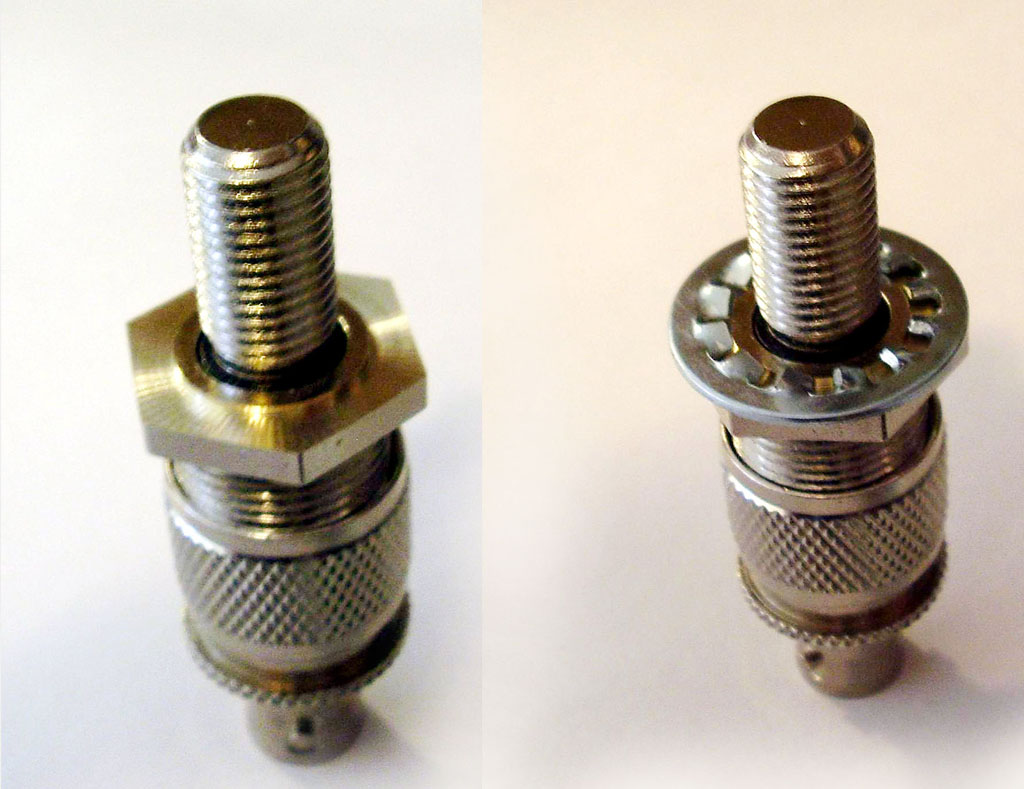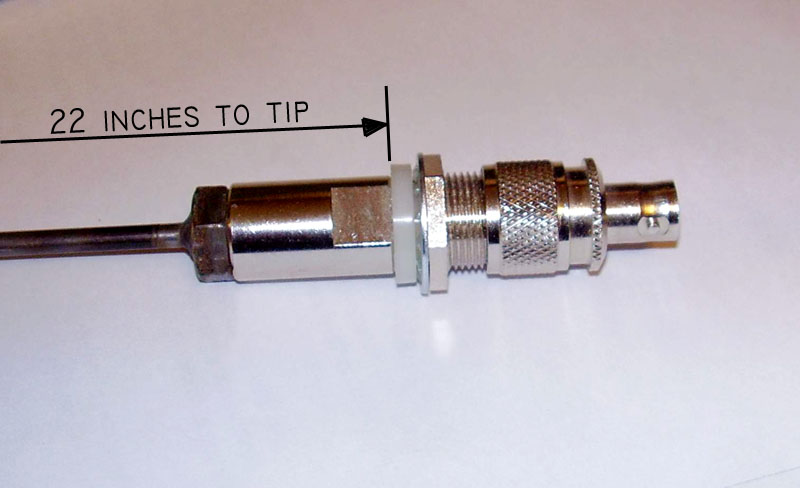

|
Bob's Shop Notes: |

|
Click here for larger image. On several occasions I've cited a commonly marketed insulated feed-thru mounting for CB antennas as suitable for doing your own comm antenna. I've seen this part in blister packs in lots of stores for prices ranging from 8 to 12 dollars . . . even less on eBay. These mountings are designed to support much larger antennas and are quite suitable for mounting a 1/4-Wave Comm 'whisker' to your airplane. |
|
Click here for larger image. An improved methodology for keeping the lock washer centered on the connector is to cut away .015 to .020" of material off the face of the hex down to a diameter of .500" as shown here. You can grip the part in a 3-jaw chuck directly onto the threads. Don't mash 'em and take very light cuts. A couple of .005" passes produced this end result with no damage to threads. |

|

|
Click here for larger image. You'll need a piece of 1/8 to 3/16" piano-wire which is available from most well stocked hardware stores. Also, a 3/8-24 x 3/8 stainless hex bolt. Drill a 1/32" larger hole through the bolt. You need the clearance for good solder wicking. Silver-solder the bolt to the end of the antenna whisker as shown. Bugger the bolt threads pretty good (poor boy's lock screw). A chisel works good, just leave first three threads untouched so you can get it to start into the adapter. Coat the threads with grease and screw it into the adapter. |
|
Click here for larger image. Here's the installation ready antenna. The coax connector shown is an PL259 to BNC-F adapter available from Radio Shack. Cut the antenna to 22" in length measured from the end of the adapter to the tip of the antenna. Grind a spherical end finish on the tip to make it less hazardous to body contact . . . |

|

|
Click here for larger image. The internal tooth lock washer goes inside between the doubler and the connector. The skin+doubler thickness should be .09" or better and braced against stringers and/or bulkheads if possible. If you're installing on a composite aircraft, the under-side double will also be a gathering location for a series of radials described elsewhere in AeroElectric Connection writings.
|